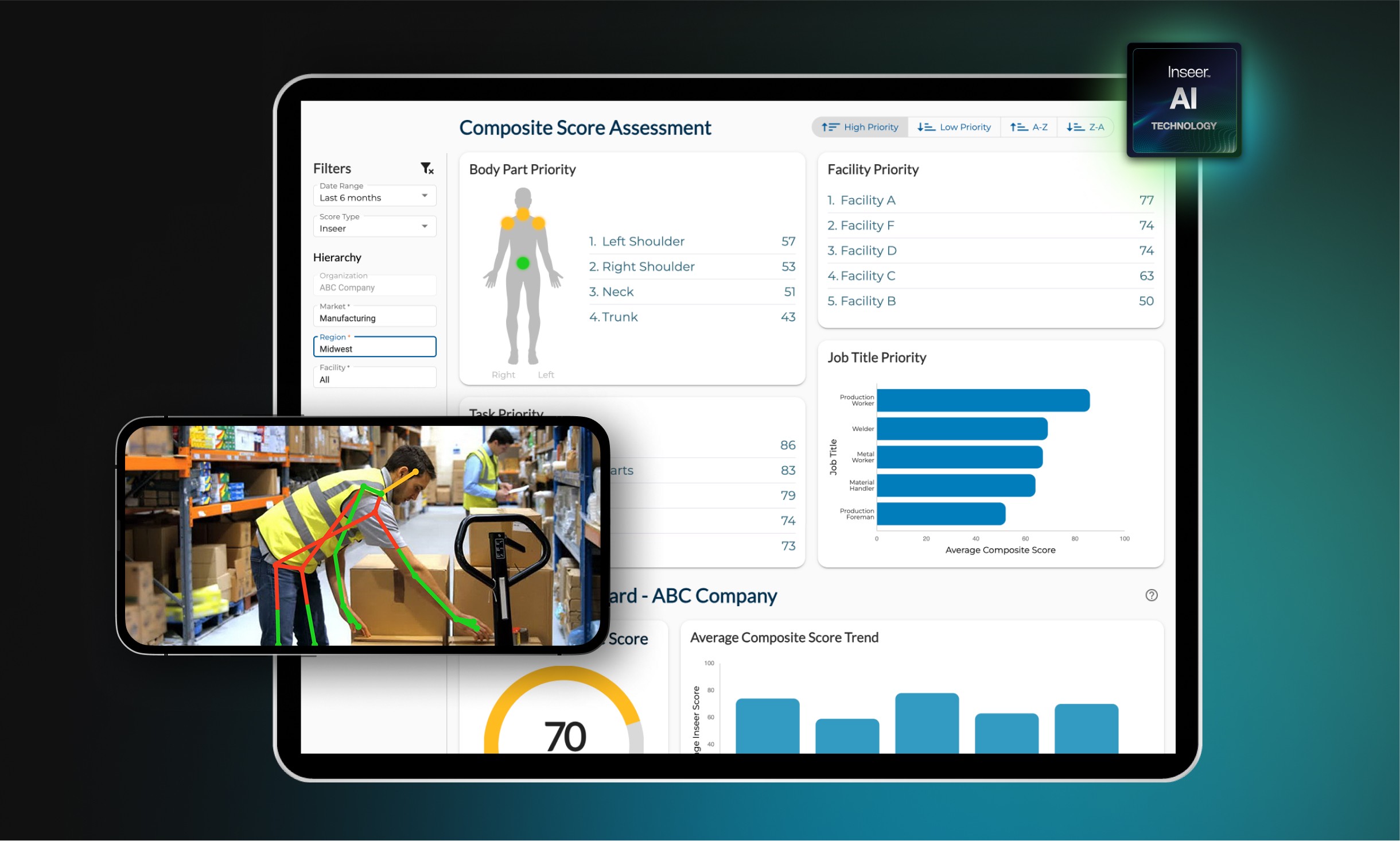Automating Ergonomics Risk Assessments: 5 Proven Benefits for Workplace Safety
Traditional vs. automated assessments: Share this visual guide to get leadership buy-in.
Ergonomics risk assessments are essential to keeping workers safe and injury-free. But every ergonomist knows, traditional methods can be slow, inconsistent, and prone to human error.
That’s why industry leaders are turning to AI-powered ergonomics tools to streamline the process and reduce musculoskeletal disorders (MSDs)—the leading cause of workplace injuries and disability.
Automating the assessment process not only makes your job easier, but it also empowers employees to take an active role in their own safety.
Engages employees through a gamified experience
Builds trust and strengthens team relationships
Fosters a proactive safety culture
The key takeaway: Automation enables organizations to identify job hazards faster, improve workplace well-being, and reduce operational costs—all while creating a safer, more productive work environment.
Here's why automating ergonomics risk assessments is the most effective approach:
1. Greater accuracy and consistency
Traditional ergonomics assessments often rely on subjective observations, leading to inconsistencies and errors. AI-driven ergonomics software eliminates human bias, delivering fast, precise, and reliable data collection. With automated insights, you can proactively address ergonomic risks and significantly reduce workplace injuries.
2. Real-time assessments for faster interventions
Unlike manual assessments that require tedious data entry and delayed analysis, automated assessments using AI-powered tools provide real-time risk detection. Automating this process enables ergonomists to spot potential issues immediately and act before injuries occur. Faster interventions mean healthier employees and fewer costly workplace incidents.
3. Cost savings through proactive injury prevention
Employee injuries due to poor ergonomics lead to costly workers’ compensation claims, medical costs, and lost productivity. By using automated ergonomics risk assessment tools, you’ll have more time to focus on preventing injuries before they happen—reducing financial losses and improving overall efficiency through automation.
$20 billion:
Annual direct cost of Musculoskeletal Disorders (MSDs) in the workplace
According to U.S. Bureau of Labor Statistics
4. Scalable solutions for large workforces
For companies with large teams or multiple locations, manual ergonomics assessments can be overwhelming. AI-powered solutions scale effortlessly, ensuring consistent evaluations across all employees without increasing your staffing costs. This makes automating ergonomics risk assessments the right move particularly for organizations looking to increase efficiency at scale through automation.
5. Data-driven training and compliance
AI-generated ergonomics insights support employee training, regulatory compliance, and continuous workplace safety improvements. With automated data-backed strategies, ergonomists can create more effective training programs and ensure compliance with ergonomics standards.
Download this visual guide to share with your leadership team

How Inseer can help
The shift from manual to automated ergonomics assessments is transforming workplace safety. Today, companies are adopting AI-powered automation to deliver more accurate, efficient, and scalable risk evaluations.
Inseer is leading this transformation, equipping organizations with the technology and support they need to proactively address ergonomic hazards and enhance workplace safety.
Using advanced computer vision and machine learning, Inseer’s AI-driven ergonomics platform automates risk assessments—eliminating the need for wearables or time-consuming manual evaluations. This seamless, data-powered approach helps you detect risks faster, implement preventative measures, and reduce workplace injuries with greater precision.
By integrating automation into your ergonomics strategy, you gain real-time insights, increase efficiency, and foster a healthier, more productive workforce. Rather than replacing human expertise, Inseer’s technology enhances it—enabling ergonomists to focus on injury prevention while automation takes care of repetitive data collection and analysis.
Manual assessments vs. automated assessments

Conclusion
Automated ergonomics assessments powered by Inseer provide distinct advantages over traditional methods by enhancing accuracy, responsiveness, scalability, and employee engagement, ultimately creating safer, more productive work environments.







